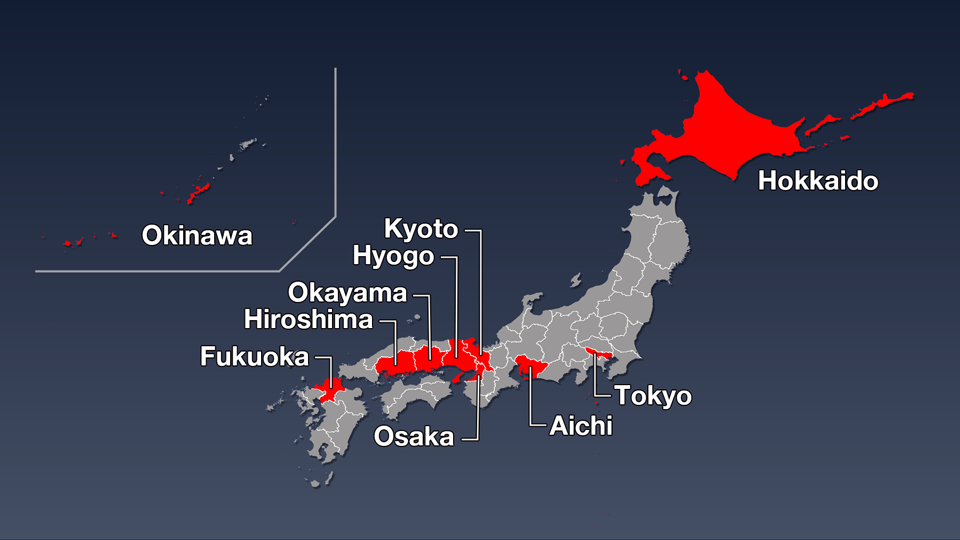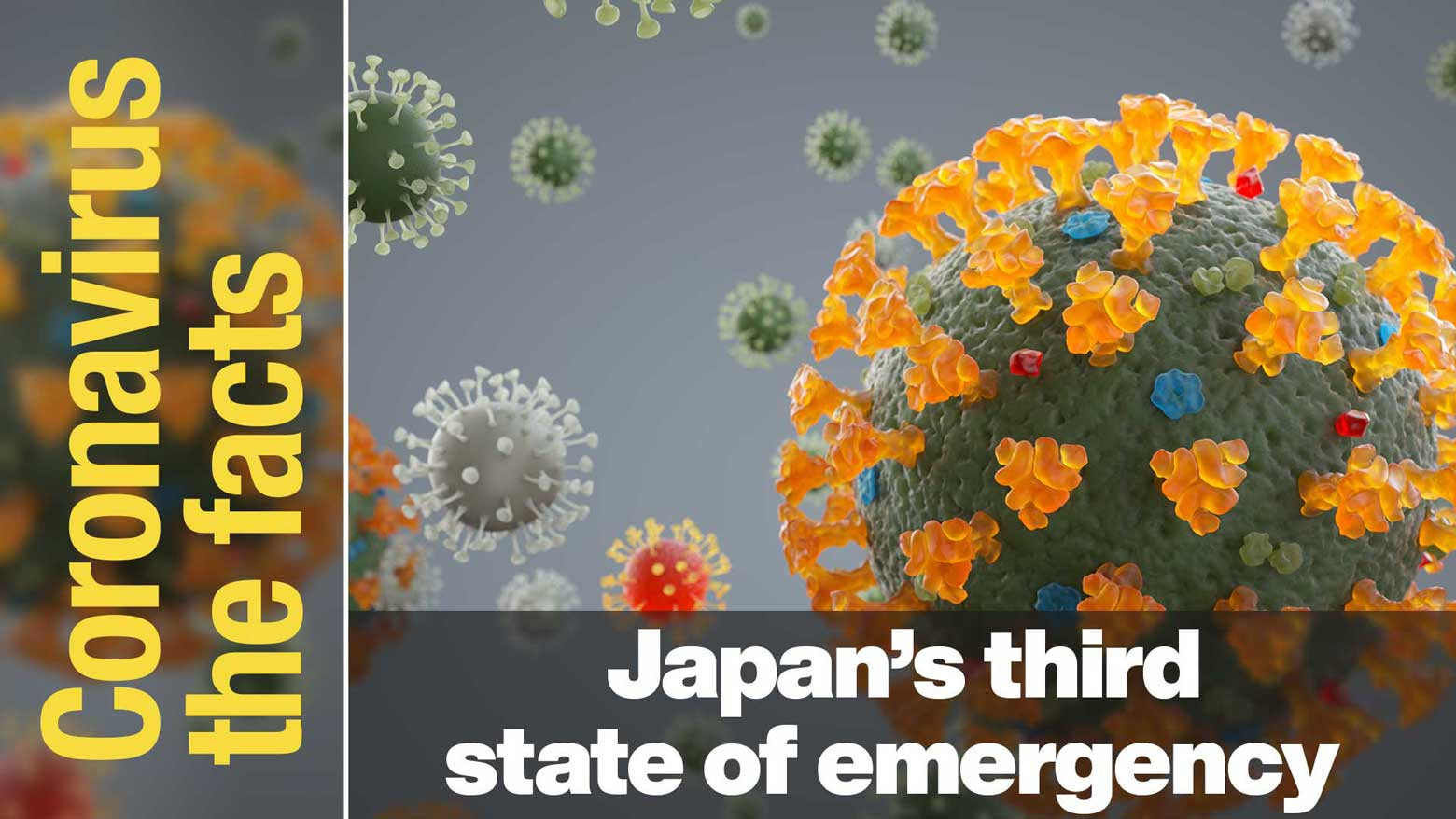This is part 86 of our coronavirus FAQ. Click here to read other installments: #Coronavirus the facts. Find the latest information and answers from experts on everything COVID-19.
Japan's government has extended its state of emergency to June 20. It was set to expire on May 31. Okinawa was added to the list that includes Tokyo, Osaka, Hyogo, Kyoto, Aichi, Fukuoka, Okayama, Hiroshima and Hokkaido prefectures.
*Updated on June 3, 2021.
Measures differ by prefecture
Some of the measures are listed below. For more details, please visit prefectural government websites.

Excursions
The central government is asking affected residents to refrain from nonessential excursions and travel between prefectures. It is also urging companies to implement teleworking, with the goal of reducing the number of commuters by 70 percent.
Restaurants, bars and karaoke
The central government is asking bars and restaurants that serve alcohol or offer karaoke to close. Those that don't serve alcohol can remain open until 8 p.m. Bars and restaurants that allow customers to bring their own alcohol are also asked to close. Takeout and delivery services can continue. People are also asked to refrain from drinking in groups on the street or in parks.
Large commercial and recreational facilities
The central government is asking large-scale commercial sites with floor space of more than 1,000 square meters, such as department stores, shopping centers and movie theaters, to shorten their hours and close by 8 p.m.
Areas within these facilities that offer everyday necessities can remain open as usual.
Tokyo/Osaka/Hyogo/Kyoto/Hiroshima/Hokkaido
Large-scale commercial facilities are asked to shut by 8 p.m. on weekdays and close on weekends.
Okayama
Large-scale facilities are asked to close by 8 p.m. Facilities with floor space exceeding 10,000sqm are asked to follow some restrictions - including postponing or canceling events or bargain sales that could attract a crowd.
Hiroshima
Large-scale facilities are asked to close by 8 p.m. Facilities with floor space exceeding 10,000sqm are asked to close on weekends.
Supermarkets and convenience stores
These can operate as normal.
Transportation
Subway, train and bus services may be reduced.
Events
Organizers are asked to cap venue capacity by half or 5,000, whichever is smaller. Events must end by 9 p.m.
Osaka
Organizers are asked to cap venue capacity by half or 5,000, whichever is smaller. Events must end by 9 p.m. Weekend events are to be held without spectators.
Okinawa
Organizers of events involving more than 1,000 people are asked to postpone or cancel them. They can go ahead without spectators, or online. Organizers of events that expect to attract fewer than 1,000 people are asked to halve the number of attendees, arrange without spectators, or move online.
Schools
Schools are not asked to close, but they are being urged to provide some online classes.
Measures in other prefectures
The central government has also extended the period of stricter anti-virus measures for Saitama, Chiba, Kanagawa, Gifu, Mie, Gunma, Ishikawa and Kumamoto prefectures to June 20. Ehime was excluded on May 22. The areas are not subject to a state of emergency and restrictions vary by region.
For more details, click here: Stricter anti-virus measures
This information was updated on June 3, 2021.
